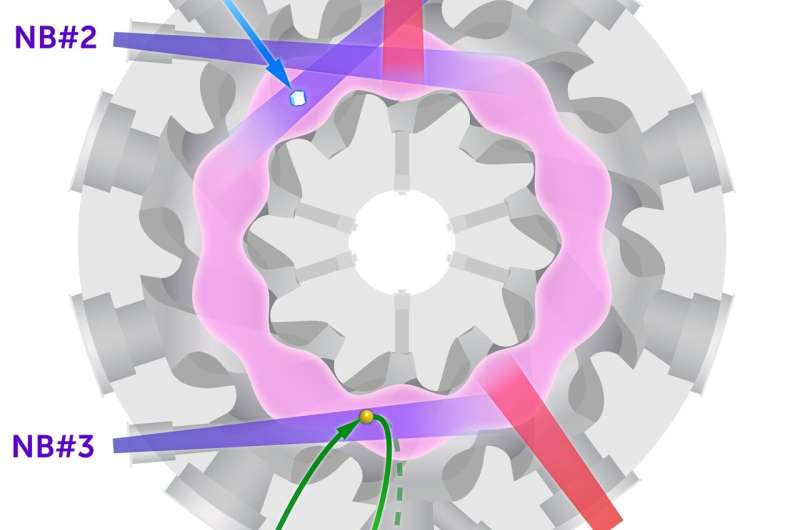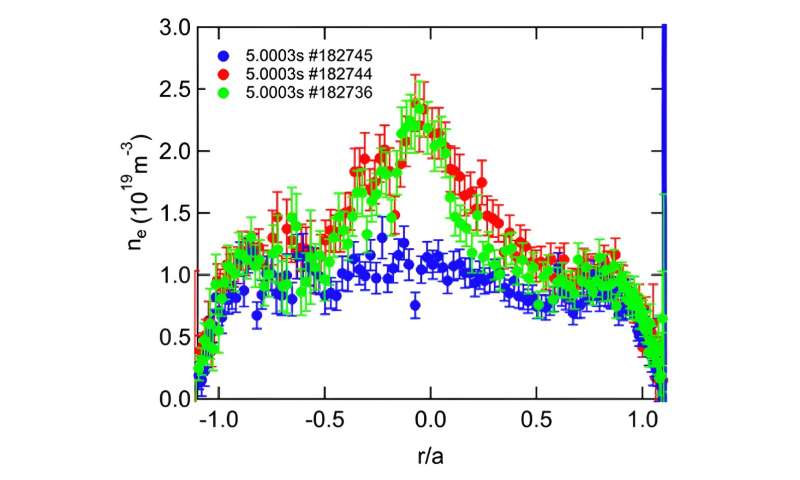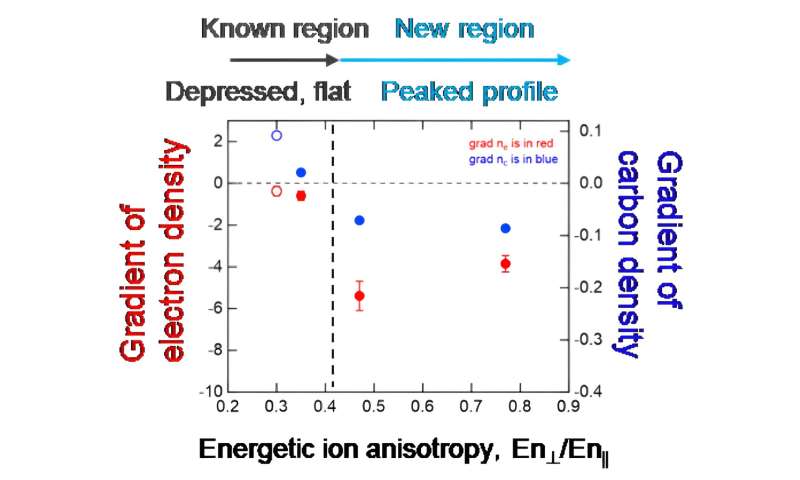This article has been reviewed according to Science X's editorial process and policies. Editors have highlighted the following attributes while ensuring the content's credibility:
fact-checked
peer-reviewed publication
trusted source
proofread
Researchers find potential new method to control plasma density in fusion reactors

In the realm of fusion research, the control of plasma density, temperature, and heating is crucial for enhancing reactor performance. Effective confinement of plasma particles and heat, especially maintaining high density and temperature at the core where fusion occurs, is essential.
In the Large Helical Device (LHD), challenges persist as the electron density profile often remains flat or even depressed at the center, complicating efforts to sustain high central density.
The LHD is equipped with five neutral beam (NB) injectors for plasma heating. Injectors NB#1 to NB#3, deliver beams tangentially to the magnetic field, while NB#4 and NB#5 inject beams perpendicularly. Despite variations in the power ratio between tangential and perpendicular injections, the ion temperature profile remained unchanged.
Adjustments in the tangential to perpendicular energetic ion ratio alter the velocity distribution from isotropic to anisotropic. The researchers explored how density profile depends on the state of these energetic ions by analyzing the ratio of the stored energies in the perpendicular and parallel components, designated as En⊥/En|| from the injected beam power of NB#1–NB#5.
Modifying the anisotropy within a range from En⊥/En|| = 0.3 to 0.8, showed that En⊥/En|| ⊥/En|| > 0.4 resulted in centrally peaked electron density profiles.
Subsequently, the density profile of carbon ions was examined by externally injecting carbon and observing the ion behavior. The research is published in the journal Physics of Plasmas.

The profile was centrally depressed in the conventional experimental range of En⊥/En|| ⊥/En|| > 0.4.
These findings suggest that the plasma inflow/outflow rates change spontaneously with the presence of energetic ions. Further investigations into the effects of energetic ions were conducted using simulation calculations.
Initially, the investigators analyzed the electric field in the radial direction at the plasma core, which simulated -5 kV/m, consistent with measurements from the heavy ion beam probe (HIBP). Although an electric field of this strength is unlikely to influence particle flow significantly, further analysis of particle inflow and outflow due to turbulence was conducted. The results suggest that turbulence may influence both peaked and flat density profiles.
-

Electron density profiles in plasmas. Changing high-energy ion state shows the peaked and flat density profiles. Credit: National Institute for Fusion Science -

Relation between electron and impurity density gradients in plasmas and energetic ion anisotropy En⊥/En||. Credit: National Institute for Fusion Science
Significance of research results and future developments
This discovery elucidates that the direction and volume of particle inflow and outflow within the confinement region of fusion plasma can be effectively regulated by applying the anisotropic nature of energetic ions, thereby keeping the plasma in an optimal state.
According to the researchers, the new physics mechanism behind this must be clarified. The researchers say they will further develop their research to contribute to higher performance of fusion reactor plasmas, downsizing of fusion reactors, improvement of energy output, and control of plasma burning conditions.
More information: M. Nishiura et al, Core density profile control by energetic ion anisotropy in LHD, Physics of Plasmas (2024). DOI: 10.1063/5.0201440
Journal information: Physics of Plasmas
Provided by National Institutes of Natural Sciences



















